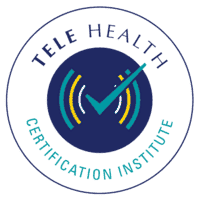G Suite through Google can solve many of your technological needs as a provider. Telehealth Certification Institute is pleased to announce that we have created an in-depth course, "G Suite for Healthcare", to help you better understand the use of G Suite as an integral part of your practice. Raymond Barrett of Telehealth Certification Institute and Mark Jones, Certified Google Expert, offer over 5.5 hours of instruction that addresses the capabilities of G Suite so that you can maintain security and remain ethically and legally compliant when you offer services as a healthcare provider. This professional guidance from the team of a telehealth expert plus a Google expert will quickly answer questions you have about how best to use the variety of products offered in G Suite.
Telehealth News
Some phone systems market themselves, especially for healthcare organizations, and for good reason. Not all phone systems are the same. One error that clinicians (and therefore clinical practices) often commit is to take the technology they use in their personal lives and bring it into their healthcare practice, assuming that it is adequate. Traditional phone lines and cellular service are quite secure. However, additional features such as voicemail, faxing, and texting bring added risks to healthcare information. Group practices and larger organizations utilize features such as setting on-call procedures, ring groups, automated attendants, and administrator control over all phone accounts. Clients put their trust in their healthcare providers to protect their private information. Using ordinary or traditional phone lines, voicemail, faxing, and texting can jeopardize patients’ sensitive information.
I have briefly addressed the topic of Digital Therapeutics in a previous blog entry that focused on ADHD and Esteem Therapeutics.
New to this term? "Digital Therapeutics" is an emerging form of technology in healthcare that combines software programs, devices, and various interventions to generate an umbrella of caregiving that covers all the parties involved in treatment. Technological aspects are used in conjunction with other forms of "traditional" treatment, such as therapy or medication. Patients and caregivers collaborate and are kept in sync with updated information that is readily available to all in order to optimize patient outcomes.
Digital therapeutics addresses a wide range of conditions and provides a myriad of high-quality options for personalized patient care. Digital therapeutics forms an independent category of a broader healthcare program and is distinct from diagnostic and telehealth products. Implementing a program will involve a network of therapy options in which each component of care reinforces and supports the other.
Often the treatment of ADHD is fragmented and difficult to track, not only for parents and caregivers but for the person with ADHD as well. I was very impressed and inspired by Esteem Therapeutics. This new and emerging technology, known as digital therapeutics, empowers both the person with ADHD and their entire care team, with the tools to be very effective in combatting ADHD.
Great tools such as Esteem Therapeutics can only be effective if they are utilized. Esteem Therapeutics is a very well-designed platform that is easy to use and understand. The user quickly experiences how engaging and effective it is. I expect clients will really enjoy using it.
Social media has a wealth of information. This great amount of data allows us to look at trends, discover correlations, and make predictions. We can now use it to alert people of mental health needs and send them helpful resources.
In this video and blog post, I share my experience switching from using paper charts to using a practice management program.
If I never made the switch, I may have burned out from the administrative tasks of running my private practice.
Before using a practice management program:







The course was so informative and I was glued to my screen for the entire duration. I received so much knowledge concerning ethics in telehealth and I am greatly encouraged to read about all the standards and policies that pertain to my practice. Thank you!.